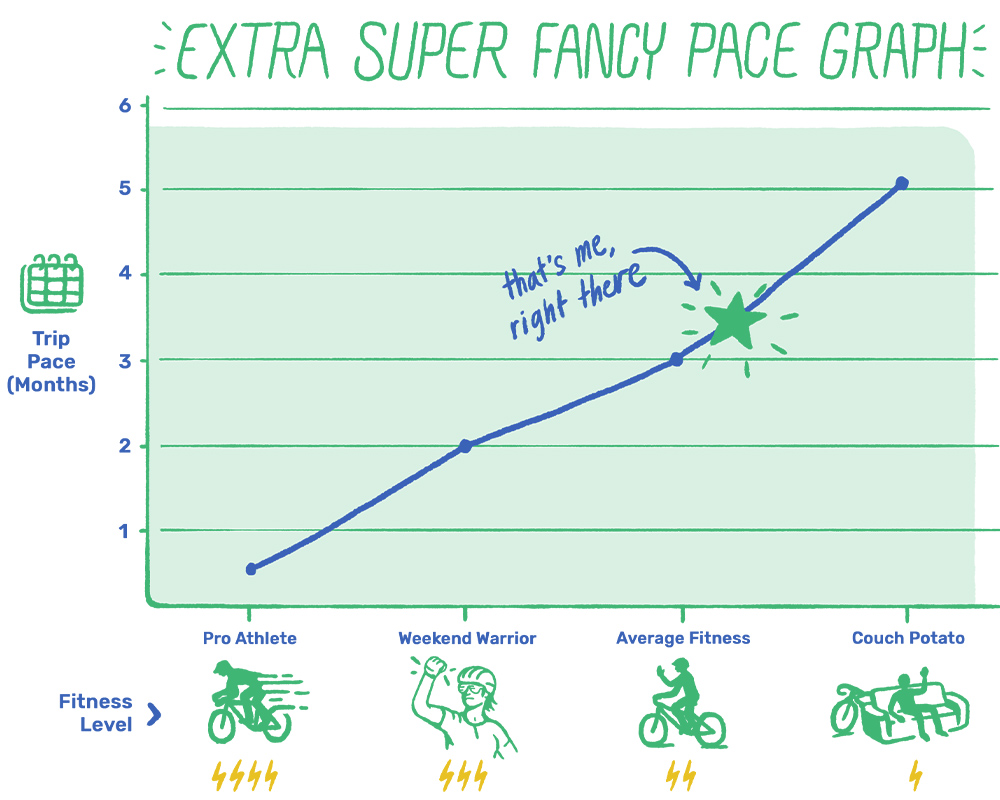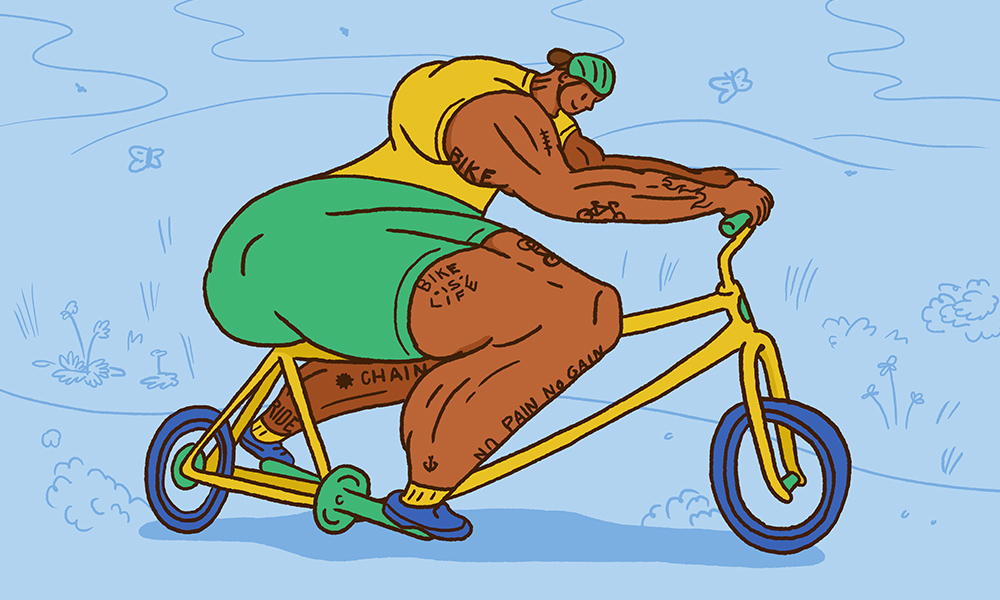How to (Not) Train for Your Bicycle Tour
Gearing up for your first cross-country bicycle adventure? You may be wondering how to physically prepare. It’s important to give your body plenty of time to get used to cycling: readying your major muscle groups, adapting your butt to the saddle, improving your riding posture, etc. But what if I told you that you may not need to train at all?
If you allow enough time for the bike tour and go slow enough, you might not ever have to hit the gym.
It all depends on your current level of fitness and what you hope to accomplish on this epic adventure. If you possess a baseline level of fitness — you can run more than a mile without stopping, or you can ride your bike 10 miles without pain — then training can happen during the first weeks of your tour. This requires you to keep the daily mileage low, between 30 and 40 miles per day. Which, let’s be honest, is how I like to bike tour anyway. (I’m a sightseer, not a racer).
If, on the other hand, your fitness level is more “couch potato” than “occasional athlete,” and you have just a few precious weeks of summer vacation in which to pedal across the continent, then you’ll need to start training months in advance.
Here’s a fancy graph to illustrate the point:

My personal philosophy is: go slow. For example, I gave myself 10 days to pedal from Portland, Oregon, to Bellingham, Washington, when most folks can cycle that distance in five days. For the first two days, I rode 30 miles each. Then 40 miles each. By the ninth and tenth days, I was cycling 60 miles before setting up camp for the night. And yeah, I took a rest day in the middle, just for good measure.
This same approach worked well for my solo, cross-country bicycle tour. I had a basic level of fitness — commuting three miles by bike to my job every day — and otherwise just listened to my body, planned my route very gently, and gave myself plenty of time. I went from pedaling 30 miles per day in the first week to pulling 90-mile days by the end of the tour. And I didn’t have to set foot in a gym!

For those of you who are looking to be a bit speedier and emerge from your travels as a muscly bike warrior with several “centuries” (hundred-mile days) under your belt, here are some tips:
Start early.
You can begin training two to three months before your adventure, or even earlier if you want. The sooner you start, the less pressure you’ll feel to get fit in a hurry.
Research workouts.
Every physical activity relies on certain muscle groups. Research some workouts recommended by cycling professionals or coaches to get an idea of what’s involved.
Get a personal trainer.
Even if you can only afford a couple of weeks with a personal trainer, the payoff is huge. A good personal trainer will perform an initial assessment to see where your muscular imbalances lie. Pretty much all of us have an imbalance of some kind: for many cyclists, it’s strong legs but a weak core. This is called Lower Cross Syndrome, and if you have it … welcome to the club!
Once they’ve identified your body’s imbalances, the personal trainer should provide tailored workouts to help balance your body and improve your posture. This information is super valuable not just for your bike tour but for the rest of your life. You can take notes, pay attention, and use this information in the future, long after you’ve stopped working with the trainer.
Avoid injuries.
It’s really tempting to get carried away and push yourself when you’re a newbie at the gym or on the trail. But getting injured, whether it’s a muscle sprain or a stress fracture, means resting up and starting back at square one. So my advice remains: go slow.
Looking for more information about preparing for your first bicycle tour? We’ve got loads!

